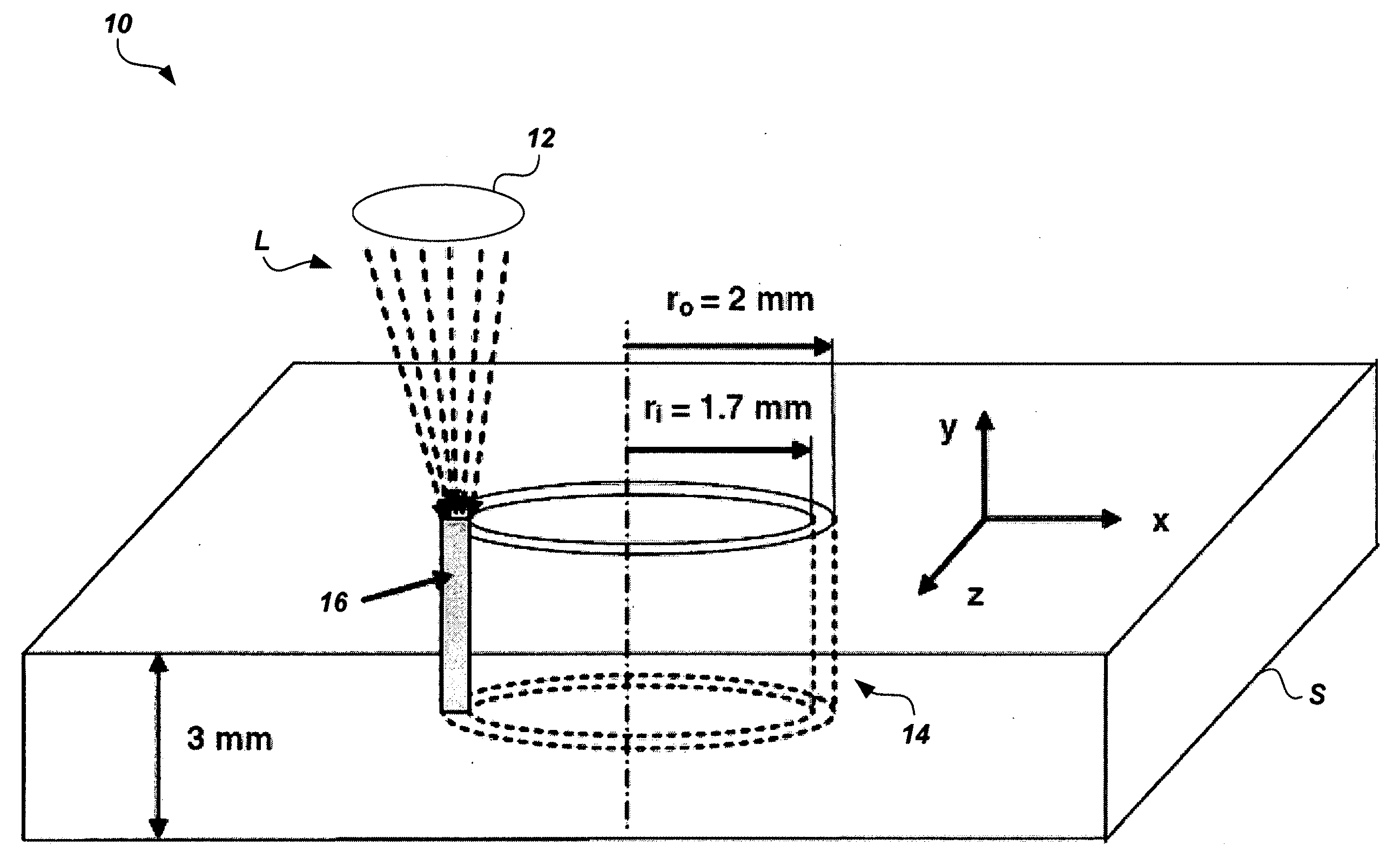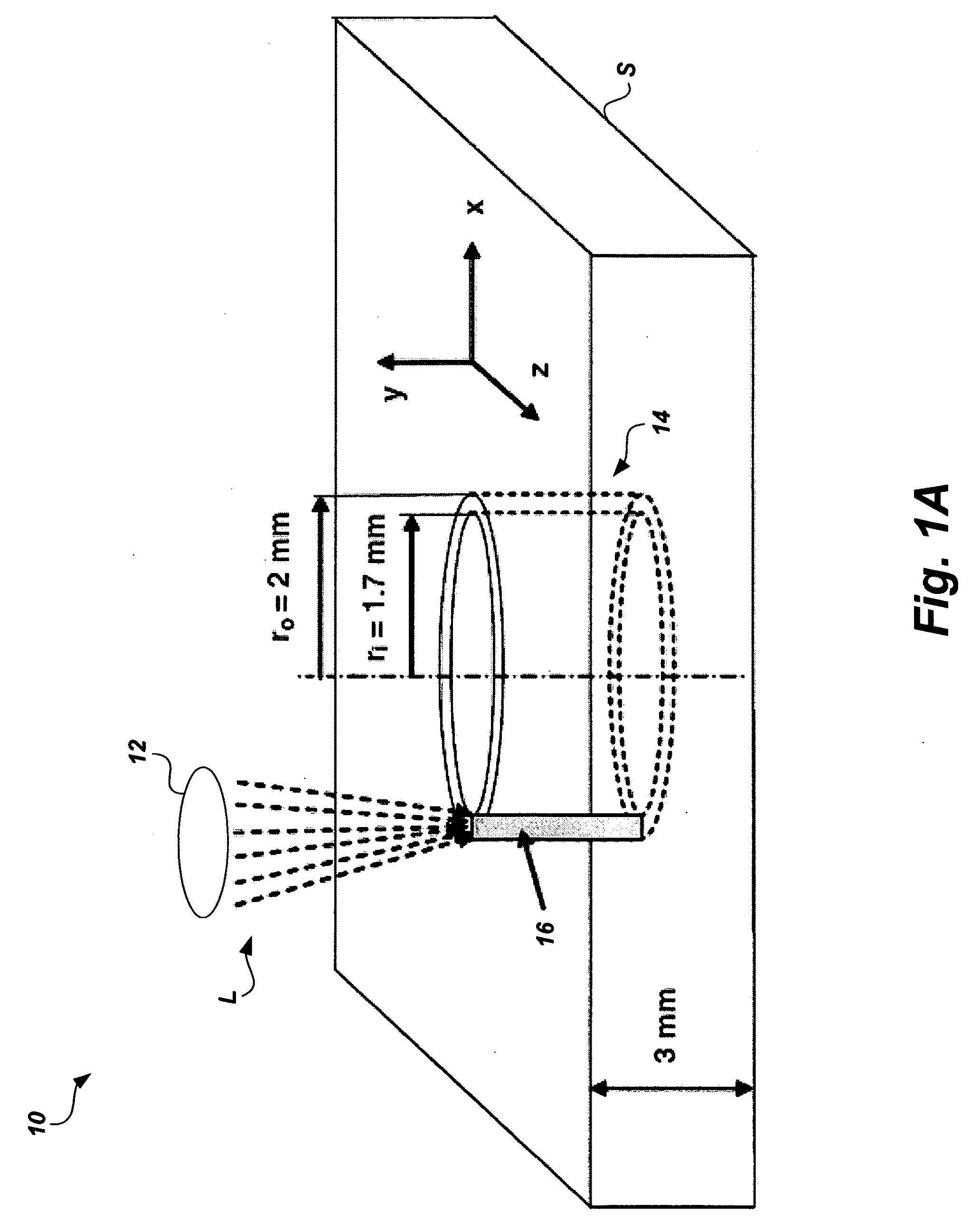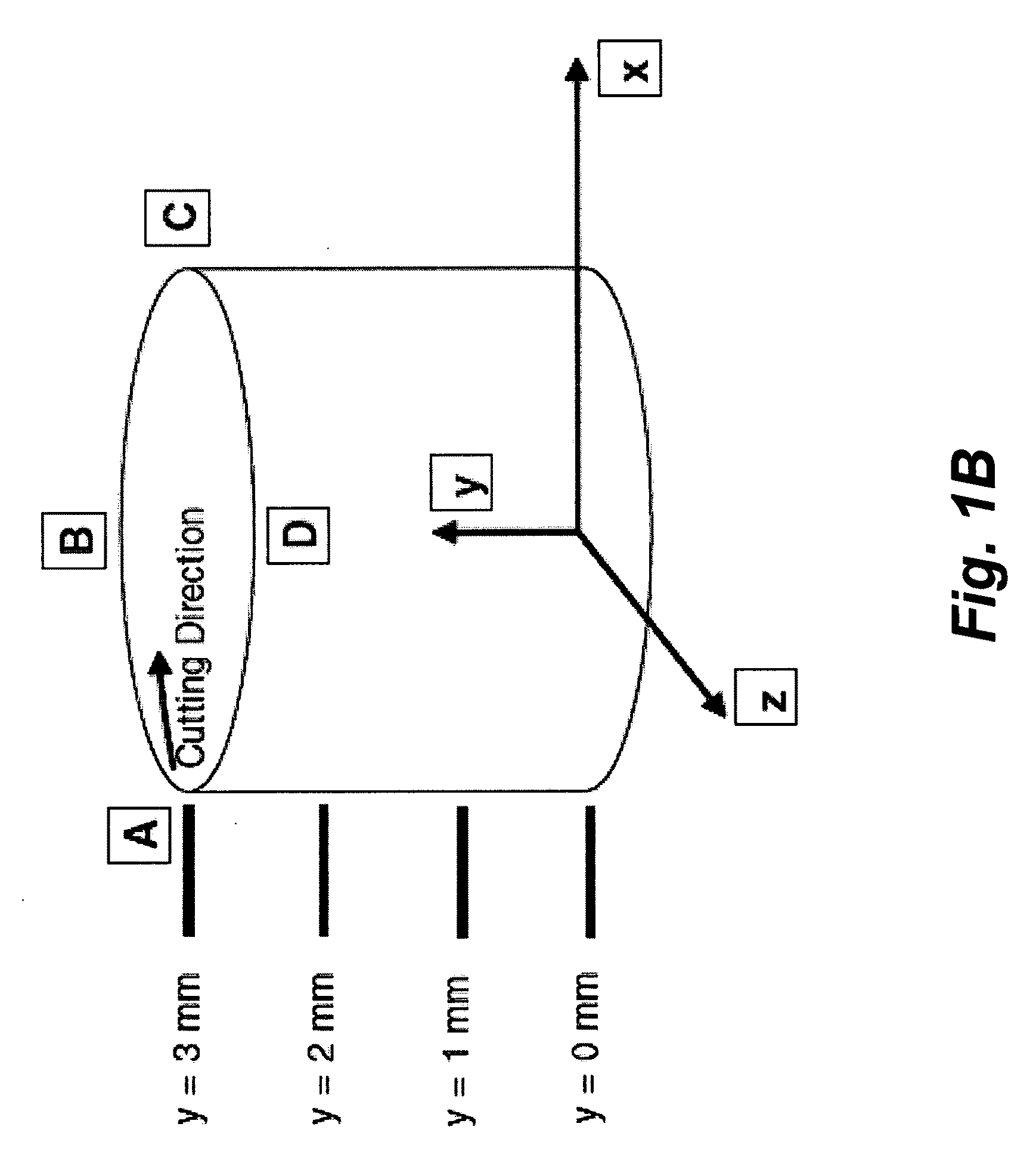Method of modeling residual stresses during laser cutting
a residual stress and laser cutting technology, applied in the field of numerical modeling and simulation methods, can solve problems such as thermal stress development during the cutting process, inability to uniformly distribute, and high temperature gradients within the neighboring solid phas
- Summary
- Abstract
- Description
- Claims
- Application Information
AI Technical Summary
Benefits of technology
Problems solved by technology
Method used
Image
Examples
Embodiment Construction
[0035]The method of modeling residual stresses during laser cutting utilizes thermal diffusion and stress equations and a discretization numerical method to model temperature variation and residual stresses in a substrate material due to laser cutting therethrough of small-diameter holes. In the present method, laser cutting of small-diameter holes in mild steel substrates are modeled, and the stress levels in the region of the cut surfaces are calculated. The residual stresses are modeled to match empirically determined residual stresses in the region of the cut surfaces using an X-ray diffraction (XRD) technique.
[0036]The method of modeling described below relates to a general laser-cutting system 10, such as that illustrated diagrammatically in FIG. 1A. In FIG. 1A, a substrate workpiece S is cut by laser light L, generated by any suitable type of cutting laser, to form a hole 14. Preferably, a pulsed laser is used, such as a CO2 laser, for example, delivering a nominal output pow...
PUM
| Property | Measurement | Unit |
|---|---|---|
| von Mises stress | aaaaa | aaaaa |
| von Mises stress | aaaaa | aaaaa |
| stress | aaaaa | aaaaa |
Abstract
Description
Claims
Application Information
 Login to View More
Login to View More - R&D
- Intellectual Property
- Life Sciences
- Materials
- Tech Scout
- Unparalleled Data Quality
- Higher Quality Content
- 60% Fewer Hallucinations
Browse by: Latest US Patents, China's latest patents, Technical Efficacy Thesaurus, Application Domain, Technology Topic, Popular Technical Reports.
© 2025 PatSnap. All rights reserved.Legal|Privacy policy|Modern Slavery Act Transparency Statement|Sitemap|About US| Contact US: help@patsnap.com



